
Top 8 Building and Design Innovations and Forecast for the 2020s
Ronny Matzat and Daniel Wurm | 06 Jan 2020
PREFABRICATION AND AUTOMATION
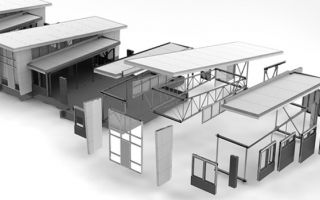
NATURAL AND INNOVATIVE MATERIALS BOOM

Above: Heliatek's incredible organic solar PVs are super thin, flexible, and can be put on virtually any surface.
OWN LESS, SHARE MORE
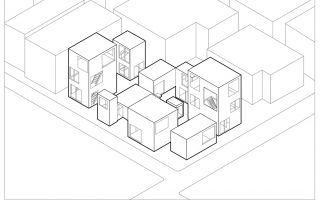
Ryue Nishizawa came up with a new definition of private and community living. The Moriyama House is a flexible-format of minimalist steel prefab house for Yasuo Moriyama, a perfect example of a home designed like a community while connecting the inside and outside. Located in the suburbs of Tokyo, this modern architectural concept presents a multi-building residence with ten separate buildings, ranging from 1 to 3 stories high, where every room is a building by itself; even the owner's bathroom is a separate building. The buildings are all prefabricated houses, which use steel plating to make the walls as thin as possible, in order to maximize the interior space.
BIOPHILIC DESIGN AND REGENERATIVE DEVELOPMENTS
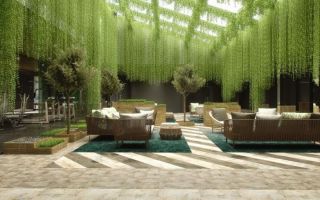
MICRO-GRIDS AND OPEN-SOURCE ARCHITECTURE
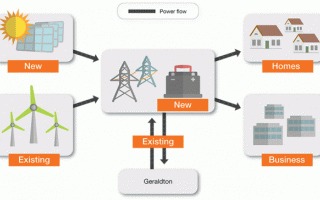
ENERGY EFFICIENCY AND BUILDINGS
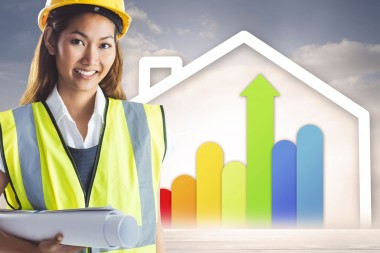
Energy efficiency is a core focus of the Australian Building Codes Board and forms part of the Australian, state and territory governments’ strategies to improve energy productivity and reduce greenhouse gas emissions.
After focussing on commercial building energy efficiency in NCC 2019, the emphasis of the NCC 2022 energy efficiency work will be on residential buildings. This will involve the development of enhanced energy efficiency provisions for residential buildings, including a possible increase in the level of thermal comfort and a whole-of-house-energy use budget. For commercial buildings, initial investigations will be carried out to support possible future changes in NCC 2025.
ELECTRIC UTES AND COMMERCIAL VEHICLES FOR TRADIES
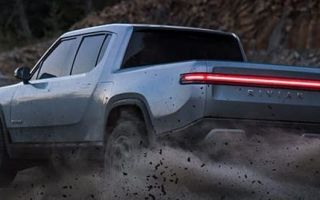
Above: The Rivian Electric Ute will revolutionise how tradies get around
Almost all vehicle manufacturers have launched or will be launching electric versions of their most popular models. Electric vehicles will become mainstream, and the cost will drop dramatically. Chances are, when you visit a showroom in 2022 you will see battery powered versions of your favorite models, and by 2030 lots of your mates will be driving them.
General Motors' first electric pickup truck model will go on sale in the US in the autumn of 2021, the company's top executive said this year, around the same time as electric carmaker Tesla's own model is expected to debut, with a starting price under US$50,000. The electric Ford F-150 will possibly debut in 2021.
The first electric ute in Australia could come from China, with Great Wall confirming the pure-electric version of its new ute was "always" in its plans. Timing hasn't been confirmed, but Haval Australia's managing director Koma Li says Great Wall will take the as-yet unnamed electric pickup despite of our market's reticence to adopt battery-powered vehicles.
Although a lot of tradies have scoffed at the idea, just wait until they actually try one of these vehicles. Electric utes have better acceleration, higher torque, the same payloads, 4X4 capability, extremely low maintenance costs (imagine, no more oil changes or fuel filter changes), and the best part; they will cost 75% less to fuel, and if you have a solar PV system it will cost you virtually nothing to run.
In 2019, Australian manufacturer ACE EV launched a unique range of electric cars and light commercial vehicles; ACE Cargo, ACE Yewt and ACE Urban. The world is shifting to electric vehicles. Internationally, governments are supporting uptake with measures such as Electric Vehicle targets, bans on internal combustion sales, road access restrictions (congestion / low-emission zones), purchasing grants and registration / tax discounts. People want them, most governments want them and businesses want them. The shift is undeniable and accelerating rapidly.
REGISTRATION FOR VICTORIAN TRADIES
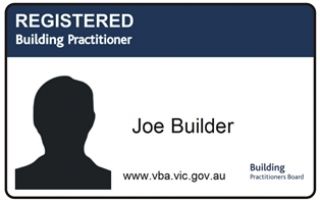
After decades of lobbying the government, industry associations have finally achieved the goal of bringing in mandatory registration of most building trades. Registration of carpenters in Victoria is proposed to kick off in 2021, with chippies being given one year to apply and register, followed by a 5 year probationary period before full registration by 2027.
Although the details have yet to released, we expect that registration will be limited to qualified trades people, just as it is now for other trades. Thousands of tradies in Victoria will need to be assessed, and training provided for them to become qualified and licensed. This is a tremendous opportunity to improve the professionalism of the industry.
States with licensing or registration schemes have increased apprenticeship uptakes, and generally a higher standard of workmanship. Not only will registration provide a level playing field, it will provide a minimum benchmark for contractors to meet, resulting in a better outcome for the public and less disputes with contractors.
If you are a cowboy operator in Victoria, your time is up!
EMBRACE THE FUTURE!
How will you react to new technology and ideas? How you choose to react may determine the success of your business. Some people react negatively and are scared to try new ways of doing things. But in our experience, those who think ahead and adopt new technology and ideas are better prepared for when the technology inevitably becomes standard practice.
You can prepare for the future by completing a course from the Green Building Institute. Check out our great range of courses; there is something for almost every occupation in the building and construction industry.
Authors:
Daniel Wurm is a qualified trades person and teaches sustainability to builders and trades people across Australia as part of the Green Building Institute's Green Tradies and Energy Smart Builders Program. He won the VET Teacher/Trainer of the Year in Sydney 2015.
Ronny Matzat (Dipl. Ing.; Architect MAA) is the founder of DSGN Kartell, a multidisciplinary design studio educating people on the impacts and consequences of climate change and providing solutions with focus on the built environment. He is a registered member with the Danish Association of Architects and teaches sustainable design at the Green Building Institute.
We need to make these ethical shifts !
The other choice is doom !
Posted on 8th January 2020, 9:59pm
We really do need to be serious on the building and design of net energy zero homes from an environmental manage level. we might as well be living in a bark hut with ineficient designs and builds.
Posted on 2nd February 2020, 12:49pm
Keep up the great work you design superhero!
Posted on 27th July 2020, 9:35pm